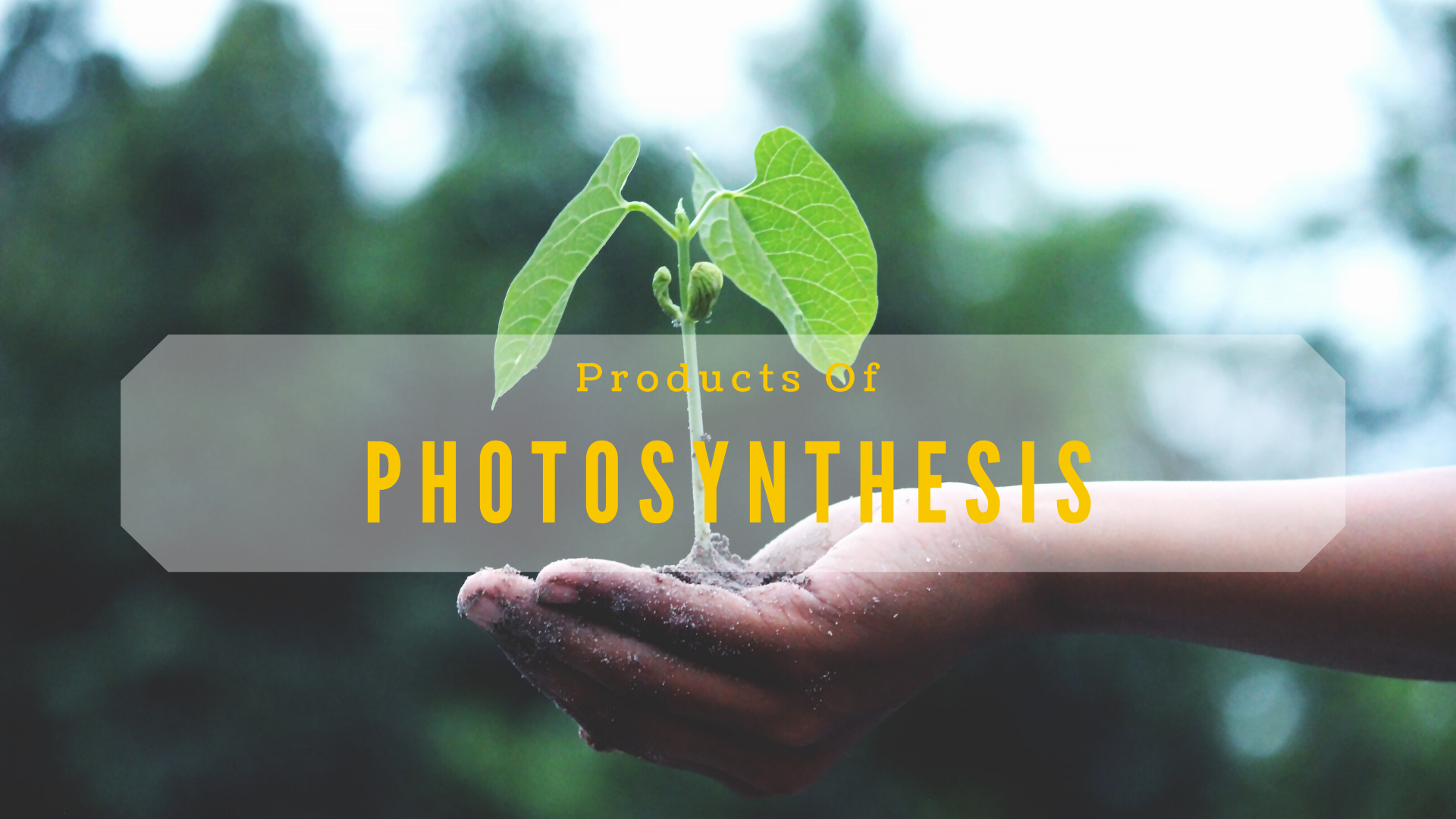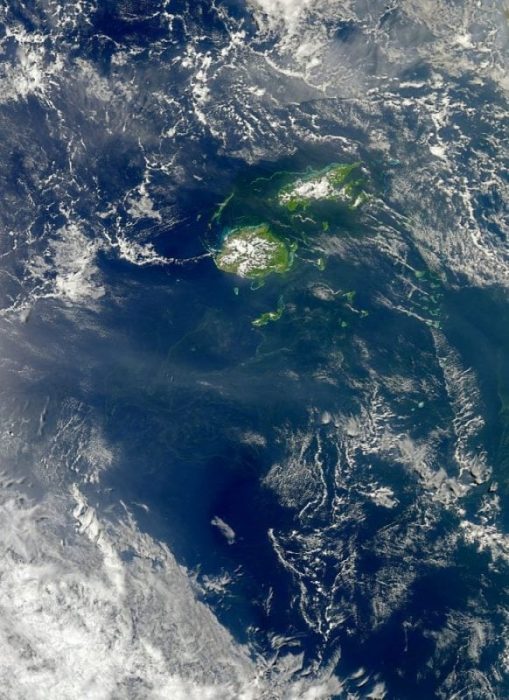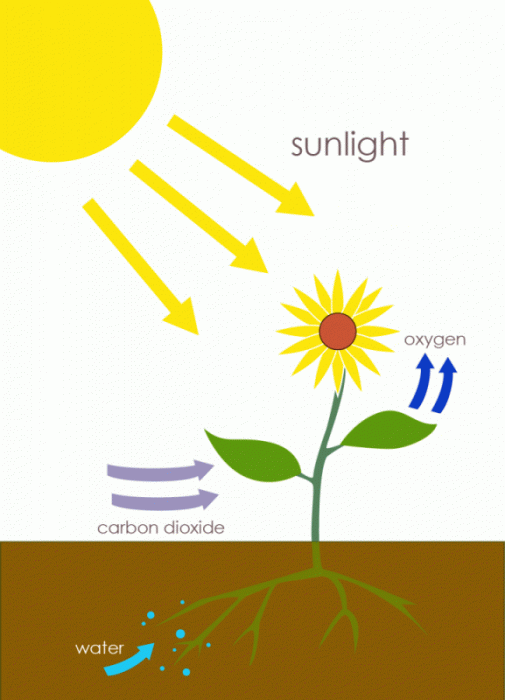
Photosynthesis produces both glucose (sugar) and oxygen as products in the chemical reaction. Plants use photosynthesis to take in sunlight, water, and carbon dioxide as reactants and produce glucose for energy and oxygen.
There are many natural processes that have changed the world into what it is today. Shifting of tectonic plates gave us the current layout of continents and oceans. Volcanic activity may have brought us out of the last ice age. The formation of an ice bridge may have led humans into North and South America.
There are also important biological processes that have played important roles as well. Perhaps one of the most important is reproduction. The ability to spawn successive generations that carry our genes, allow species to survive beyond their lifetimes and ensure the survival of their species. Another might be adaptation, which allowed species to adapt to many different kinds of environments and eventually evolve. The process of evolution created the numerous amount of biodiversity that exists today and existed in the past.
“This is a green world, with animals comparatively few and small, and dependent on the leaves. By leaves we live.” — Patrick Geddes
For the many oxygen-breathing species in the world, a crucial process to our existence might be the process of photosynthesis that occurs in the plants and trees all around us. Its origin might be a dark tale of disaster, but the results are the reason that we exist.
But first, you likely came here to find out what does photosynthesis produce:
- Glucose or sugar to help feed the plant
- Oxygen
Origin of Photosynthesis
Based on current evidence, it suggests that photosynthesis emerged about 3.2 to 3.5 billion years ago. Since the organisms that lived back then did not really form fossils for us to look it, instead we look at the results of those organisms interacting with the environment. In this instance, researchers used stromatolites to confer the timeline. Stromatolites are layered rock structures that are produced by modern cyanobacteria, which uses photosynthesis. This leads researchers to the conclusion that ancient cyanobacteria, or their ancestors, were responsible for the emergence of photosynthesis.

“2010 Filamentous Cyanobacteria Bloom near Fiji”. Image by NASA from Wikipedia is licensed under CC0
During the time that photosynthesis emerged, the primary type of life were organisms that did not use oxygen for energy and was anaerobic. The emergence of cyanobacteria and photosynthesis, which produces oxygen, led to the Great Oxygenation Event (GOE). Initially, cyanobacteria produced oxygen that was adsorbed by minerals, like iron, but at a certain point, that adsorption halted or slowed dramatically as the minerals became saturated. This saturation meant that the excess oxygen had to go somewhere else.
“Leaves see the light as my eyes can never do. They impound its stellar energy, and with that force they make life out of the elements.” — Donald Culross Peattie
It went into the air and water. Most organisms that do not use oxygen find oxygen to be toxic. So, as the cyanobacteria thrived and other oxygen-using (aerobic) organisms emerged, the anaerobic ones started to die. The GOE started about 2.45 billion years ago and represented a mass extinction event where countless anaerobic species went extinct as they faced this new toxic world. Over time, the oxygen levels decreased as more and more aerobic species were emerging and consuming the oxygen. Carbon dioxide levels rose and slowly, the Earth became what it is today.
As the genes of photosynthesis moved around bacteria and spread across the world, eventually it jumped into Eukaryotes, the group of organisms that compose things like humans and plants. Researchers believe that an ancient eukaryotic cell merged with a cyanobacteria-like organism, that carried photosynthesis, via a process of endosymbiosis. This merger led to the creation of chloroplasts, the home of photosynthesis in plants. As time and evolution continued, it became the process we see in modern organisms.
What Is Photosynthesis?
Photosynthesis is the process by which organisms, such as plants and cyanobacteria, produce energy, to use for respiration or storage, and oxygen as a waste product. In plants, the overall path is that the chloroplasts use energy from the sun to turn carbon dioxide and water into sugar (glucose) and oxygen.
The sunlight is absorbed by proteins called reaction centers, which are in the chloroplasts and composed of proteins, pigments (chlorophyll), and other factors. The reaction centers use the energy from the sun to split water molecules. This releases oxygen gas, which is released into the air, and hydrogen molecules that are then used to create energy compounds in the cell, like ATP. These energy compounds are then entered into the Calvin Cycle, along with carbon dioxide.
The Calvin Cycle uses energy compounds to break down complex carbon molecules, made in part by carbon dioxide from the environment, into reduced forms that include carbohydrates, like sugars. These sugars leave the cycle and can be used to create energy and aid in respiration.

“Photosynthesis gif” from Wikipedia/At09kg is licensed under CC-BY-SA 3.0
There are instances where it can become stalled or limited. If there is not enough sunlight or carbon dioxide, the process is slowed considerably. Similarly, if the temperature is too hot or cold, the process will slow and sometimes stop. This is generally why you do not see photosynthesis occurring much at night or during colder or hotter times. Photosynthesis is a very efficient process that helps to maintain the levels of oxygen that we see in the world as well as control the levels of carbon dioxide in the air. Photosynthesis can also be used by humans to benefit us beyond the crucial benefits of breathing.
The Future Of Photosynthesis
As we become better a genetic modification, we can enter the genes of plants and make modifications to photosynthesis. Very recently, researchers at Oxford University are looking into making a species of rice more efficient and increase its yield. Rice uses a photosynthesis process called C3. The researchers believe that if the can switch the process from C3 to C4, they can increase the yield of rice by 50%. This research is in its early phase and is not yet completed. If they are successful, they can create a product that would be extremely beneficial to regions facing a food crisis.
“When you think about the complexity of our natural world – plants using quantum mechanics for photosynthesis, for example – a smartphone begins to look like a pretty dumb object.” — Jeff VanderMeer
The success of this could also help to address problems of world hunger and climate change because we may be able to modify other agricultural products to make them withstand the changes and demands that are occurring. These would help to ease many of the issues the world faces as it must adjust to changing climate and environments. It would also help to deal with population growth and the demands that result from that. In more ambitious dreams, understanding the process of photosynthesis and controlling it on a genetic level, could help us in developing colonies on the moon and Mars, as we would have the means to modulate oxygen and carbon dioxide levels, important for breathing in environments without them.









